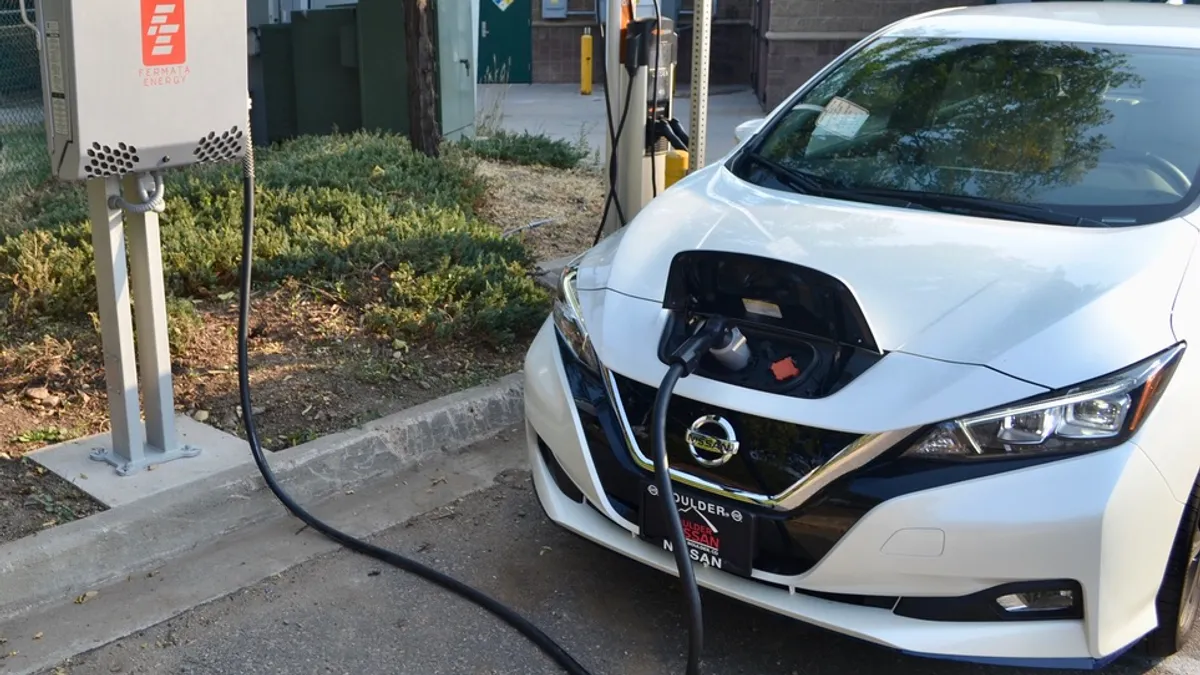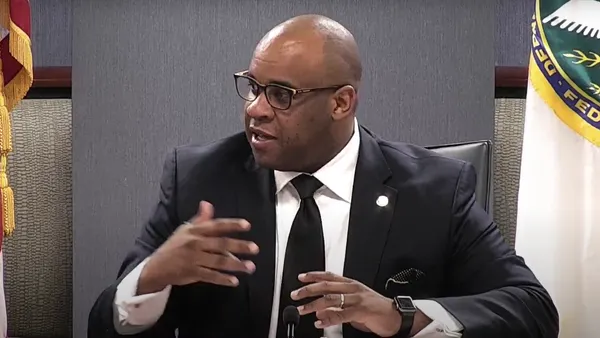Dive Brief:
- The PJM Interconnection has developed a roadmap for handling the various changes affecting its system, including the retirement of fossil-fueled generation, growth in renewable energy and storage, and the electrification of the transportation and building sectors.
- The largest U.S. grid operator intends to use scenario-based transmission planning, conduct targeted reliability studies and consider ways to reflect extreme weather risks in its analyses, according to the Grid of the Future report released Tuesday.
- “We've got this emerging consensus that we actually do need to plan for the future,” Tom Rutigliano, senior advocate for Sustainable FERC, a group housed in the Natural Resources Defense Council, said Wednesday. “This is the sea change of seeing different segments of the industry consolidate on a path forward.”
Dive Insight:
“The grid of the future is happening now, and this paper details the road map that will help us plan the transmission system to enable the shift to renewable generation resources that are smaller, more dispersed, and more variable in output than the existing fleet,” Suzanne Glatz, PJM director for strategic initiatives and interregional planning, said in a statement Tuesday.
PJM intends to expand its use of scenario-based planning, which it has used to study offshore wind and state energy goals, according to the report.
“Only through careful scenario analyses will PJM be able to evaluate the holistic impact on the need for grid expansion,” the grid operator said.
PJM’s plan to focus on the future echoes the Federal Energy Regulatory Commission’s proposed rule on transmission planning and cost allocation, which calls on transmission providers to conduct long-range transmission planning, according to Rutigliano.
“It feels like there's a little bit of a phase shift,” Rutigliano said. “You've got the practitioners and the regulators both kind of converging on this idea that this is what we need to do.”
The report builds on previous and ongoing activities, such as a December report on the energy transition and proposed interconnection reforms.
The report also highlights some of the major changes PJM is facing, including the potential addition of an estimated 105,000 MW of onshore and offshore wind, and solar capacity. PJM runs the grid and wholesale power markets in all or parts of 13 Mid-Atlantic and Midwest states, plus the District of Columbia.
Some of the pending changes are seen in PJM's growing interconnection queue of proposed generating projects, mainly renewable energy, seeking permission to connect to the grid.
Besides engaging in scenario analyses that will include a look at how electrification could affect PJM’s system, the grid operator intends to conduct “targeted” reliability studies to evaluate generation and transmission reliability attributes, such as reactive control, stability, system inertia and frequency control, and short-circuit impacts to ensure reliable operations, the grid operator said.
PJM said it expects its RTEP process will continue to evolve, including through initiatives already underway, such as interconnection reform, generator deliverability methodology improvement, Effective Load Carrying Capability methodology development and putting probabilistic planning techniques in place.
Unlike in other parts of the U.S., renewable energy developers in PJM’s footprint are generally proposing projects relatively close to load centers, according to the report.
“This trend has significant implications for future grid planning, insofar as the need for major long-distance, possible multi-state, backbone transmission lines to deliver [renewable portfolio standard]-mandated power may not necessarily be the most efficient first-choice grid solution,” PJM said.
The report provides “guideposts” on the areas PJM and its stakeholders need to focus on to keep the grid reliable while meeting state clean energy goals, according to Katherine Burnham, Advanced Energy Economy policy principal.
“The PJM report demonstrates the incredible retirement of old, inefficient fossil fuels and how they're being replaced by renewable energy sources,” Burnham said Wednesday. “With these new tools at our disposal, I think there's a real opportunity there to leverage these resources in a way that is competitive and that is useful to different participants in the PJM territory.”
Those new tools, for example, include improved forecasting and grid visibility to see how resources, such as electric vehicle chargers, are operating, as well as dynamic line rating, according to Burnham.
“That level of sophistication that we have for EVs will make them an asset, not necessarily a challenge,” Burnham said, adding that the emerging tools will help renewable energy broadly. “There's a huge opportunity to improve resilience and to welcome in these new resources in a way that's cost competitive and helps us achieve our clean energy goals.”















